Lithium Battery Charger: Everything You Need to Know in the UK
Lithium Battery Charger: Everything You Need to Know in the UK
In 2016 and part of 2017, Samsung dominated headlines for all of the wrong reasons. The exploding lithium batteries of Samsung’s Note 7 phone became too good at an activity better left to terrorists.
But the tales of misbehaving lithium batteries are not something unique to Samsung phones. In fact, if you don’t charge your deep-cycle lithium battery using the correct chargers, there’s a risk that the battery could explode and/or burn.
That’s why we recommend investing in a high-quality specialized lithium battery charger that can charge your lithium batteries safely and quickly. Normal chargers designed for non-lithium batteries should be avoided when possible.
Join us as we explore how to charge lithium batteries, what lithium batteries are, and many other aspects of lithium batteries.
In this article, we will talk about:
- How Do Lithium Ion Batteries Work?
- What’s A Battery Charge?
- How To Charge A Lithium Ion Battery?
- Can I Charge A Lithium Battery With A Normal Charger?
- How To Charge A Lithium Ion Battery Without A Charger?
- How Long Do Rechargeable Batteries Last?
- Best LiFePO4 Battery Charger
How Do Lithium Ion Batteries Work?
You may have heard a lot about lithium-ion batteries, but most likely you don’t know how lithium ion batteries work.
Lithium-ion battery cells are made up of 5 major components:
1. Cathode
2. Anode
3. Electrolyte
4. Separator
5. Container
These five components work together within each battery cell to store or release energy. But how exactly does this happen? Each component plays different and complementary roles just like the players on a football team.
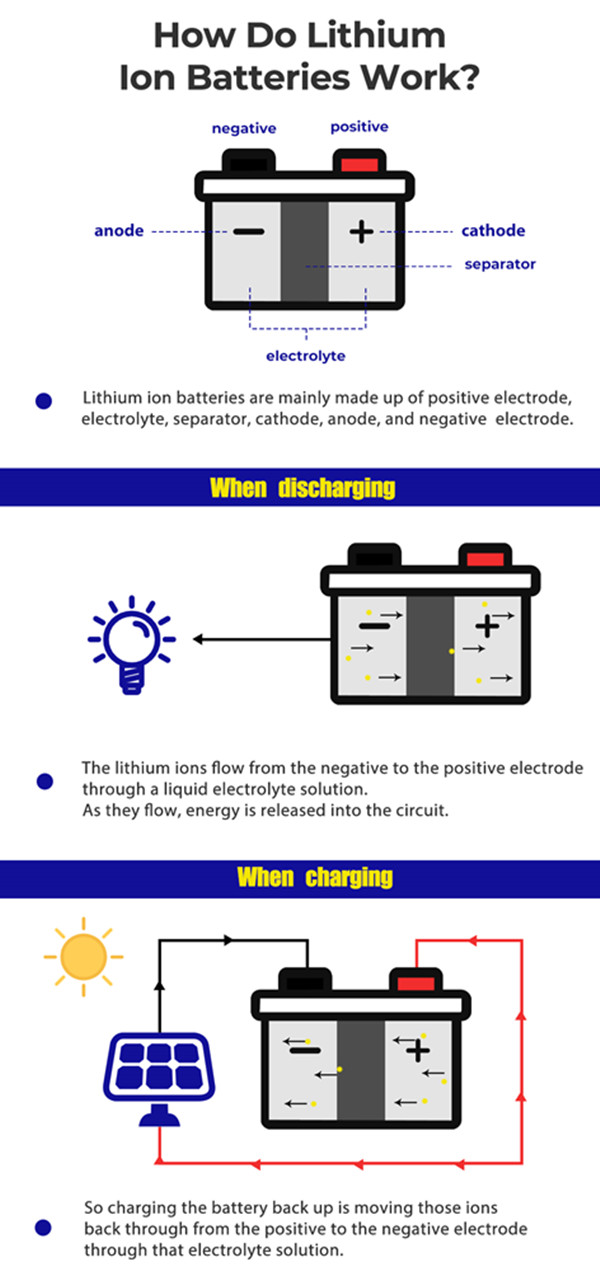
Most lithium-ion battery cells have a Graphite anode (sometimes Silicon-Carbon) that holds the Lithium ions released during charging.
On the other hand, a Lithium metal or Lithium-enriched material acts as the cathode depending on the type of Li-ion cell. As a result, the names of different types of lithium ion batteries describe the cathode material used, for example:
● Lithium Cobalt Oxide ( LCO) batteries
● Lithium Iron Phosphate ( LFP or LiFePO4) batteries
● Lithium Manganese Oxide ( LMO) batteries
● Lithium Nickel Manganese Cobalt Oxide ( NMC) batteries
All these Li-ion batteries' names describe the cathode material used. But what exactly does the cathode do?
● When charging, the Lithium-based cathode releases positively charged Lithium ions (Li+) that travel through the electrolyte and separator to the anode. In comparison, the free electrons discharged by the Lithium ions can only travel to the anode via an external medium provided by the device being powered (e.g., a laptop).
● When discharging, the cathode receives the previously discharged lithium ions and electrons back from the graphite anode.
This reversible process that enables the charging and discharging of lithium-ion batteries is called intercalation and deintercalation. Intercalation occurs during charging while deintercalation occurs during discharging.
The electrolyte acts as a medium to transport lithium ions between the two electrodes (cathode and anode), while the separator blocks electrons from traveling between electrodes through the electrolyte. The separator also helps prevent short circuits in the event the electrolyte evaporates.
Lastly, the case or container holds all the other components securely. Not only that, but the case also insulates and protects the battery's components from outside influences.
Now you can help your friends when they ask you, “how does a lithium ion battery work?”
What’s A Battery Charge?
The term “battery charge” can refer to the level of charge, normally called the State of Charge (SOC), within a battery. This measurement is used to measure how much energy is still available in a battery. On your smartphone’s screen, the battery charge or state of charge usually appears as a percentage or a battery icon in the top-right corner.
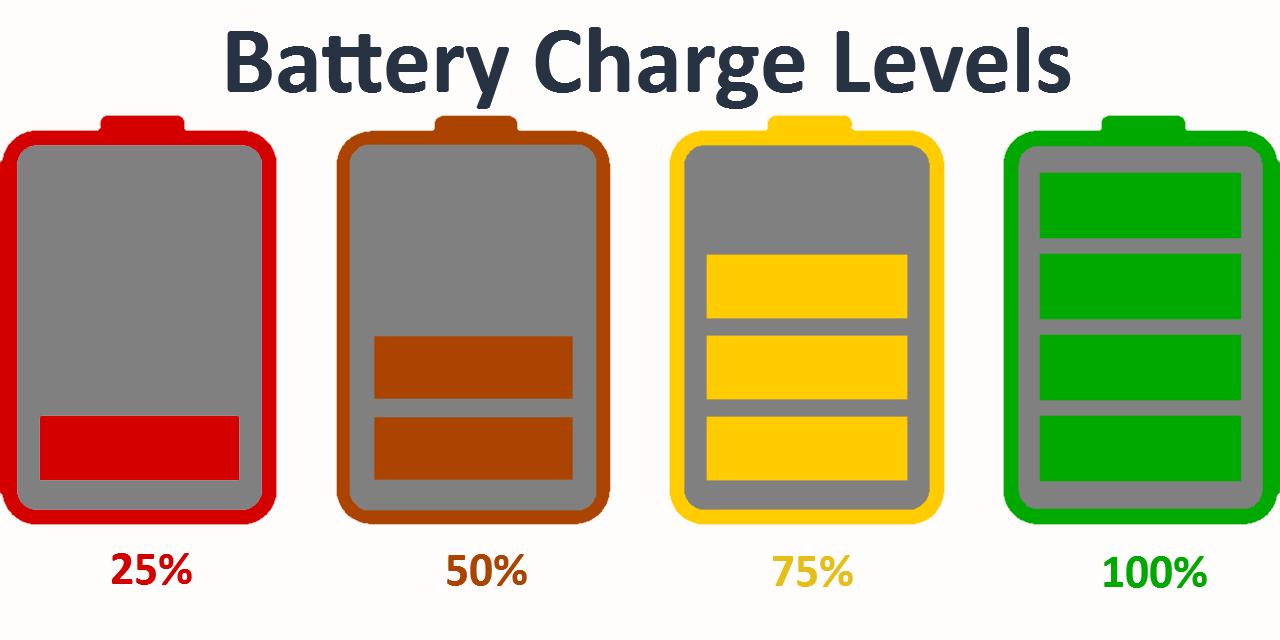
Other people might use the term “battery charge” to describe the act or process of charging a battery.
How To Charge A Lithium Ion Battery?
Some battery owners or solar installers don’t know how to charge a lithium battery. As a result, they often make incorrect charging settings that will damage their batteries’ lifespan.
So an incorrect charging setup not only kills your battery but in some cases, can even cause your lithium-ion battery to explode and/or burn.
That’s why it’s absolutely necessary to take time to learn about how lithium ion batteries especially solar lithium batteries charge safely and correctly.
We recommend using these three methods when charging lithium batteries, depending on your situation:
1. Using a power outlet and a compatible AC to DC battery charger.
2. Using solar panels and a compatible MPPT charge controller.
3. Using your car’s or RV’s alternator and a compatible DC to DC onboard battery charger.
We will explore in detail how to go about this below. Before that, we’ll divert your attention to the differences between LiFePO4 Vs Lithium ion batteries for a while.
LiFePO4 Vs Lithium ion batteries
Many people still get confused with LiFePO4 and lithium ion batteries. Much of the confusion stems from the fact that the pronunciation of LiFePO4 (Lithium Iron Phosphate) and Lithium Ion are really similar.
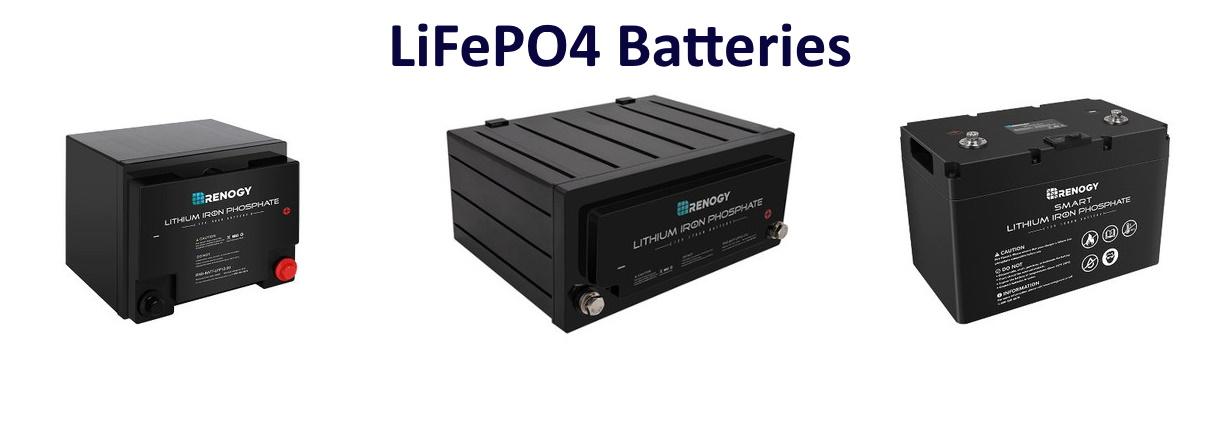
Some DIY installers do not even know how to charge LiFePO4 batteries.
In short, a LiFePO4 (LFP) battery is a type of lithium ion battery. So its charging methods are similar to other Li-ion batteries. We recommend you cross-check with your LiFePO4 battery’s manual to see if this is true.
While LiFePO4 is known for being one of the safest deep-cycle batteries, it's very particular in how they want to be charged.
There are only three recommended methods to charge your LiFePO4 batteries, which are using a power outlet, solar panels, or your vehicle’s alternator.
Each of these methods needs specific components that allow you to safely charge your battery using that method.
Method 1: Charging LiFePO4 Batteries With Solar

To charge LIFePO4 batteries with solar panels you need to use MPPT charge controllers designed for use on LiFePO4 (LFP) batteries like the Rego 12V 60A MPPT Charge Controller, Rover 60 Amp MPPT Solar Charge Controller, and many other compatible MPPT charge controllers.
Method 2: ChargingA Lithium Battery With An Alternator
There are two ways to charge your lithium battery using your vehicle’s alternator.
1. Using a Renogy DC to DC Onboard Battery Charger
2. Using a Renogy DC to DC MPPT Charge Controller
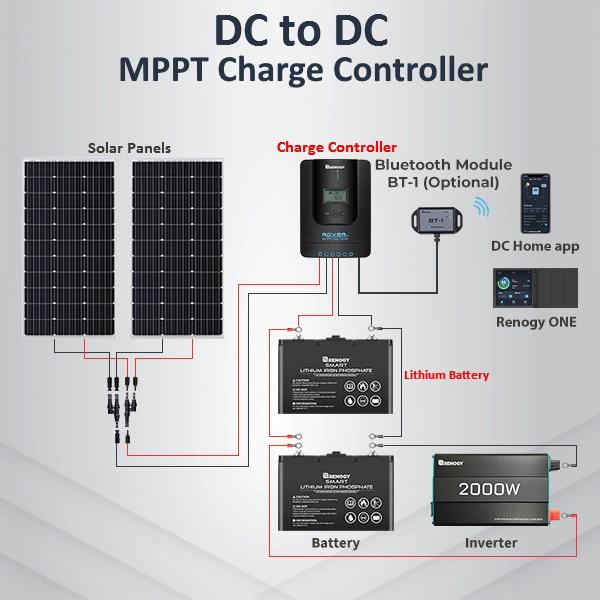
We recommend the first method that calls for use of a DC to DC onboard battery charger like the Renogy 12V DC to DC On-Board Battery Charger that prioritizes charging your house batteries instead of the starter battery.
If you also have solar panels installed, consider using a 12V 30A Dual Input DC-DC On-Board Battery Charger with MPPTthat takes advantage of both power sources and fills your house batteries faster.
Method 3: Using A Power Outlet And A Portable AC to DC Solar Lithium Battery Charger
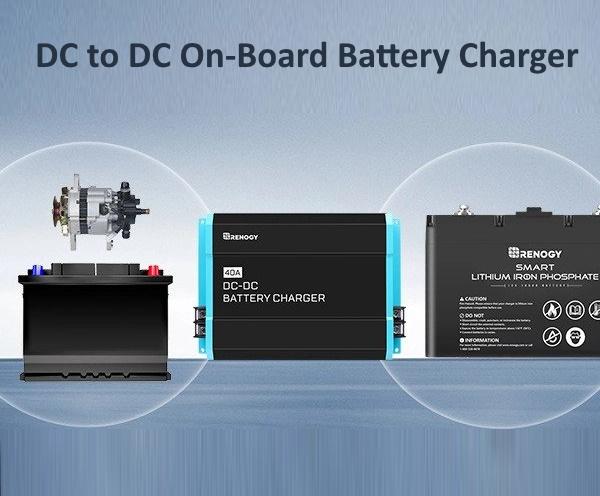
The 12V 20A AC-to-DC LFP Portable Battery Chargeris a great LiFePO4 solar battery charger when using a power outlet on the grid. This portable battery charger can not only be used to refill your battery's charge but it can also be used to reactivate a lithium battery that has been protectively shut down by the battery's BMS.
Can I Charge A Lithium Battery With A Normal Charger
Do not charge your lithium battery with a normal charger designed for use only on lead-acid batteries. Doing so will most likely damage your lithium battery beyond all hope and quickly render it unusable.
Why are lead acid chargers bad for lithium batteries?
Lead Acid chargers use varying voltages and sometimes high voltages to charge batteries. In contrast, lithium batteries, due to their unique makeup, need to be charged using a constant voltage and current.
Avoid listening to any advice you might find on the internet that encourages you to use lead acid chargers and charge controllers on lithium batteries unless the manufacturer explicitly says so.
Do You Need A Special Charger For Lithium Batteries?
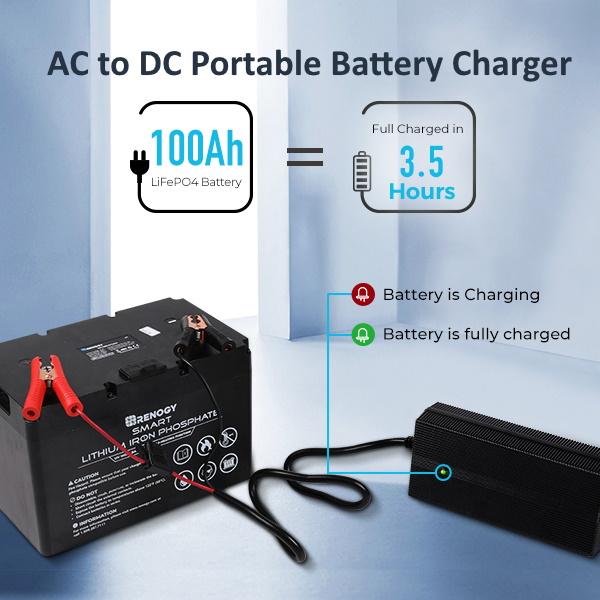
In short – Yes. Using a normal battery charger designed for Lead Acid on a lithium battery may result in damage or even destruction of the battery. This is because lithium batteries require specifically designed charging profiles tailored to their chemistry. Therefore, the safest and best way to charge a lithium battery is by using a charger explicitly designed for Lithium batteries.
Can You Charge A Lithium Battery With an AGM Charger
No, you cannot charge a lithium battery with an AGM (Absorbed Glass Mat) charger. The charging methods of AGM battery chargers are not compatible with the charging profile needed by lithium batteries.
Using an incorrect charging profile on your lithium battery will damage the battery beyond repair and any possible use. So it’s important you use the appropriate charger for your particular application.
How To Charge Lithium Ion Battery Without Charger?
It's possible to charge your lithium ion battery without a specialized charger but we don't recommend it. Doing so can irreparably damage your Li-ion battery.
In worse cases, charging an Li-ion battery without a charger can cause fires, explosions, injury, and property damage.
That being said, you can charge your lithium battery without a charger using different methods, including:
1. Using a USB cable: For smaller 5V Li-ion batteries, you can wire your USB cables positive and negative wires directly onto your battery's positive and negative terminals. Take care to not confuse the wires or short-circuit the battery.
2. Using a solar panel: If you have a solar panel with a rated voltage similar to your battery. For example, a 12V solar panel for a 12V li-ion battery. You can charge your Li-ion battery provided the panel’s voltage isn’t too high.
3. Using a power bank or another energy storage: If you have a charged power bank or a battery from another device that has the same output voltage as your lithium ion battery. You can join them in a parallel connection to charge your discharged lithium battery.
These are some of the methods you can use to charge your lithium battery if you are in a pinch. Note that these methods are unsuitable for daily use and should only be used during emergencies.
How Long Do Rechargeable Batteries Last
Generally, different types of rechargeable batteries last for different lengths of time based on the battery’s characteristics:
1. The Battery’s Energy Storage Capacity: Refers to the maximum amount of energy a battery can store.
2. Quality and Durability of Battery: Refers to the lifespan, longevity, or resistance of the battery's components to deterioration caused by time and usage.
The energy storage capacity of a battery, measured in Amp-hours (Ah) or milliAmp-hours (mAh), affects how long a rechargeable battery will last during use.
The higher the battery's Amp-hours, the longer the battery will last before needing to be recharged. For example, a 100Ah battery will last approximately twice as long as a 50Ah battery when powering the same load.
On the other hand, the quality of a battery's construction and components determines its lifespan (also called life cycles or charge-discharge cycles).
For example, our lithium batteries for RVs have 4000 life cycles. Therefore, they theoretically have a lifespan that’s 8 times longer than typical Flooded Lead Acid batteries with 500 life cycles.
The table below shows that LFP lithium ion batteries typically have the most life cycles. Followed by Gel, AGM, and Flooded batteries respectively.
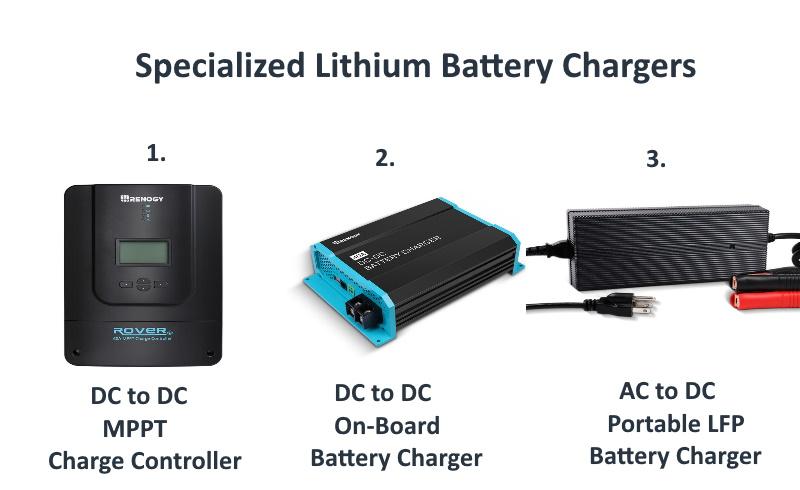
Best LiFePO4 Battery Charger
When it comes to recharging LiFePO4 batteries, you deserve the best battery chargers out there.
Renogy's chargers are designed with safety in mind, featuring overcharge protection and short-circuit prevention to keep your battery in tip-top shape for the longest time.
Furthermore, our LiFePO4 battery chargers are lightweight and ideal for use on RVs, camping trips, and other lightweight applications.
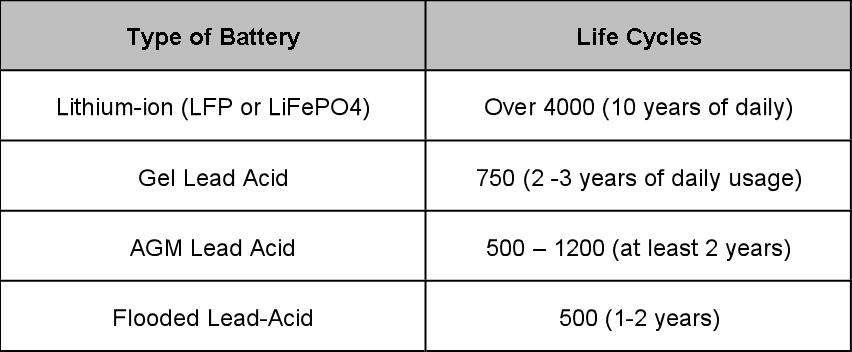
Renogy’s lithium battery chargers offer many advantages, including:
● Premium efficiency, with a high tracking efficiency of up to 99% and peak conversion efficiency of 98%.
● Compatibility with different battery types including Lithium-ion, AGM, GEL, and Flooded.
● Smart Temperature Monitoring and Voltage Adjustment
● Noiseless and Efficient Cooling Systems.
● Built-in Lithium battery activation functionality
That’s why we recommend our 12V 20A Renogy AC to DC LFP Portable Battery Charger that features the latest, best, and safest technology for charging lithium iron phosphate (LiFePO4) batteries.
For 24V lithium batteries, you can go for the compatible 24V 10A AC to DC Portable LFP Battery Charger.
|
Note We recommend you use the 24V LFP battery charger only on 24V lithium batteries. Some 12V lithium batteries cannot be connected in series to output 24V. |
So if you're looking for an easy-to-use, top-quality charger that checks all of the right boxes, Renogy's AC to DC LFP Portable Battery Chargers should be your go-to option.

Check out our range of charge controllers and battery chargers so you will never have to worry about how to charge lithium ion batteries again.
Related articles:
Charging A Solar Battery In The U.K.
What Size Solar Battery Do I Need In The U.K.?
Battery Storage For Solar Panels | 2022 UK Guide







